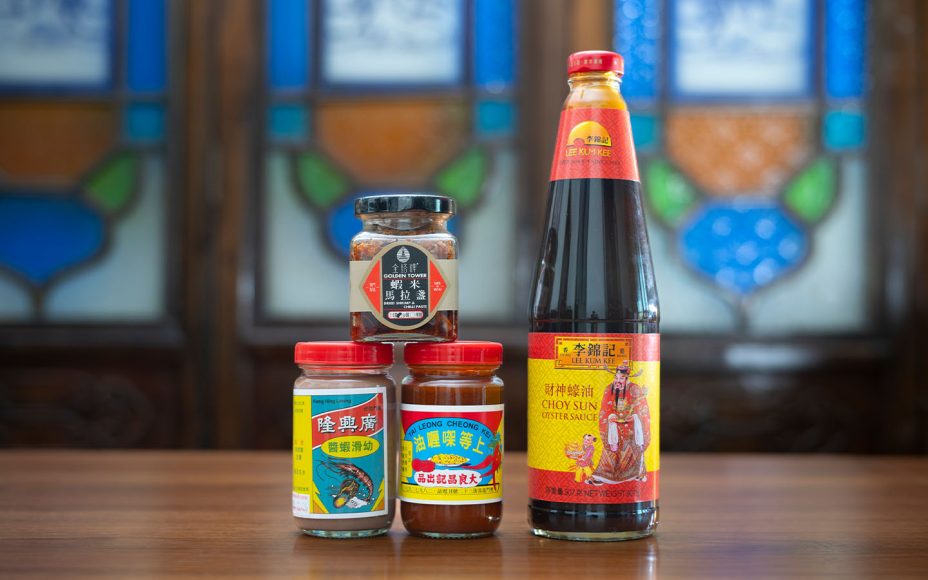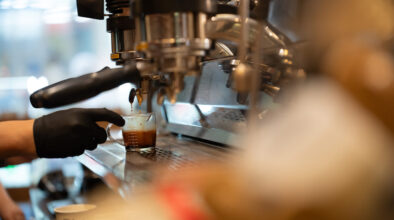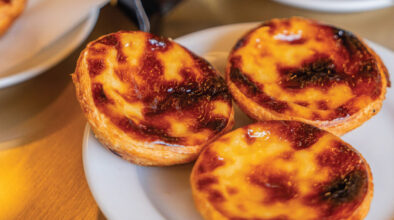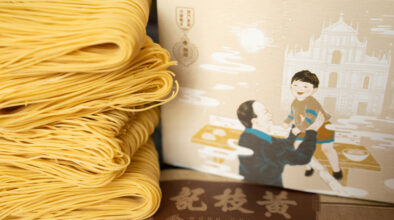When it comes to culinary souvenirs from Macao, visitors often turn to the crumbly almond cookies of Koi Kei or Lord Stow’s creamy egg tarts – and with good reason. Both represent aspects of the city’s food culture, where global flavours have converged for centuries.
If you’re after something more unusual, however – perhaps you’re picking up something for a seasoned gourmand or looking to add a dash of exotica to your own pantry – consider Macao’s impressive array of locally made condiments. The city boasts an impressive selection of jiangyuan, or shops that exclusively make and sell sauces.
Macao’s sauces have histories that date back many decades. Some, over a hundred years. But it isn’t fair to think of them as culinary relics; these concoctions, which lean towards the Asian side of Macao’s heritage, are still being enjoyed today. The wide spectrum of flavours on offer includes sweet, umami and spicy, meaning that there is something to suit everyone’s palate. They are also highly versatile and can be used to add interest to just about any dish, be it a bowl of noodles, a piquant curry or quick stir-fry.
Doing things the old-fashioned way at Kong Hing Loong
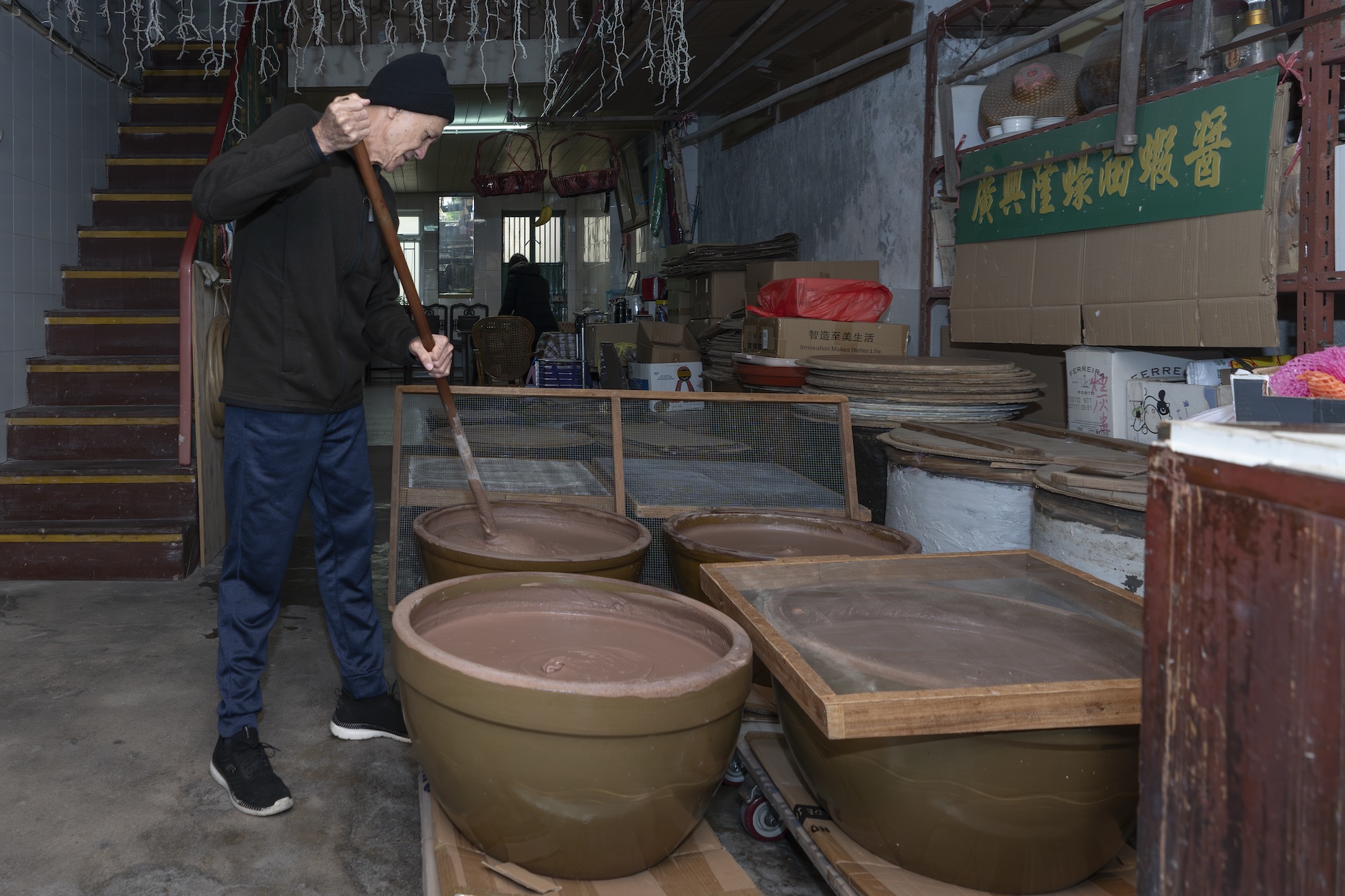
Famed for its pungent shrimp paste, Kong Hing Loong was founded back in 1900 and has been part of the Pong family for three generations. The first generation settled in Taipa after moving there from Guangdong’s Nanhai District. Much like other settlers on the island, the Pongs initially eked out a living through selling fresh seafood, although they also manufactured oyster sauce and shrimp paste on the side.
“Later on, the waters became too shallow, and the fishing boats couldn’t enter the shores here,” the second generation owner, Pong Kin Hon recounts. “Gradually, [the boats] moved to places like Hong Kong and Vietnam.” As a result, the 90-year-old adds, most of the fresh seafood businesses shut down.
Pong says that the late 1940s were a “very difficult” time for Kong Hing Loong, too, noting that his family business wasn’t able to break even. When Pong took over the business from his father in the early 1950s – at the tender age of 18 – he made the call to focus on artisanal sauces. This proved to be a wise choice, enabling Kong Hing Loong to weather the economic turmoil brought by the exodus of fishing boats and carry on trading to this day.
Pong has since passed the mantle down to his own son, Paolo. “In recent years, I feel my health hasn’t been too good…” the elderly man acknowledges. “So I called my son to come and help … it’s better than having this traditional craft production die out.”
Today, in keeping with tradition, Kong Hing Loong eschews machinery. Its shrimp paste is sun-dried after fermentation, then packaged in jars that are labelled by hand. “Other people use machinery to produce 1,000 jars [of shrimp paste], but we produce 100 jars [by hand],” remarks Pong. Paolo, who was born in the shop, describes the shrimp paste-making process as a complex – even arduous – art that requires intense attention to the weather, ingredients and moisture.
In its early years, Kong Hing Loong’s customer base consisted of locals and a smattering of Hong Kong visitors. These days, the rapid growth of Macao’s tourism industry means mainlanders now make up a large chunk of the clientele. In this sense, the business is a mirror of Macao’s development.
From humble beginnings to global success: Lee Kum Kee

Lee Kum Kee is an internationally recognisable Chinese condiment brand, with a history dating back even further than Kong Hing Loong’s. While the company is currently headquartered in Hong Kong (in fact, it has ‘Hong Kong’ printed on its famous gold label), Lee Kum Kee spent 30 years operating out of Macao. And its legacy here remains strong.
Established in 1888, the company started out in Nanshui, Guangdong Province. When its original premises were destroyed by a fire in the early 1900s, Lee Kum Kee’s founder relocated the business to Macao. Even after shifting headquarters to Hong Kong in 1932, however, Lee Kum Kee maintained its Macao presence – and still operates a 105-year-old shop here today, in the heart of the city. Macao is where the company’s longest-serving employee, the affable Chang Chin Vai, is stationed.
Chang is 88 years old and has worked at Lee Kum Kee’s Macao branch for 74 of them. Known to locals as Uncle Vai, he dutifully opens the store every morning and smiles as he helps loyal customers locate their favourites of the brand’s 200-plus products (oyster sauce is perhaps the most popular). Each transaction is hand-recorded in Chang’s trusty notebook.
In the downtime, Chang can be found sitting comfortably behind his desk and either reading the paper, listening to the radio or, occasionally, singing. Despite being well past retirement age, the conscientious worker has no intention of hanging up his gloves any time soon. “Personally, I feel very happy to have been able to serve the company from its humble beginnings all the way to its success,” Chang says. “In the old days, there were only two products. It wasn’t until the third generation [of family ownership] that the company flourished and achieved its present worldwide fame.”
Chang says that locals and tourists visit the store, which sits on a rounded street corner behind large white pillars. “Nowadays, it’s mostly tourists who come … locals will go to the supermarkets,” he elaborates. Those who do visit don’t regret it, as the Lee Kum Kee head office has granted Chang permission to dole out special discounts to the company’s customers in Macao.
Tai Leong Cheong Kei’s secret recipe

Using a family recipe passed down through generations, Sio Ng and his aunt make, package and sell aromatic curry pastes from their modest store-cum-workshop. Tai Leong Cheong Kei was founded by Ng’s grandfather, the man responsible for concocting the spicy condiment that the brand is best known for, about 40 years ago.
Ng never got to know his grandfather, who hailed from Guangdong Province and passed away shortly after Ng was born (in 1990). But the patriarch relayed his curry paste recipe to his daughter, who has since let Ng in on the secret. Nephew and aunt now work together at Tai Leong Cheong Kei, living in the storey above. The premises are located in Macao Peninsula.
While Ng had been heading towards a career in banking, he felt compelled to take the helm of his family’s business when his elderly forebears started to retire. To his delight, that’s proving to be a commercially savvy move. Demand is so strong for Tai Leong Cheong Kei’s curry paste that there’s often a line of customers outside the store waiting for their turn to buy a jar. To make sure there’s enough of the artisanally made paste to go around, Ng enforces a quota of three jars per day for each customer.
Tai Leong Cheong may have a tiny footprint, but its customer base has spread beyond Macao. According to Ng, the business has grown by “five or six-fold” in recent years; its distribution network stretches into Hong Kong and Zhuhai, and its iconic curry pastes are also for sale on online platforms like Taobao.
Myanmese-inspired belacan from Golden Tower (金塔牌)
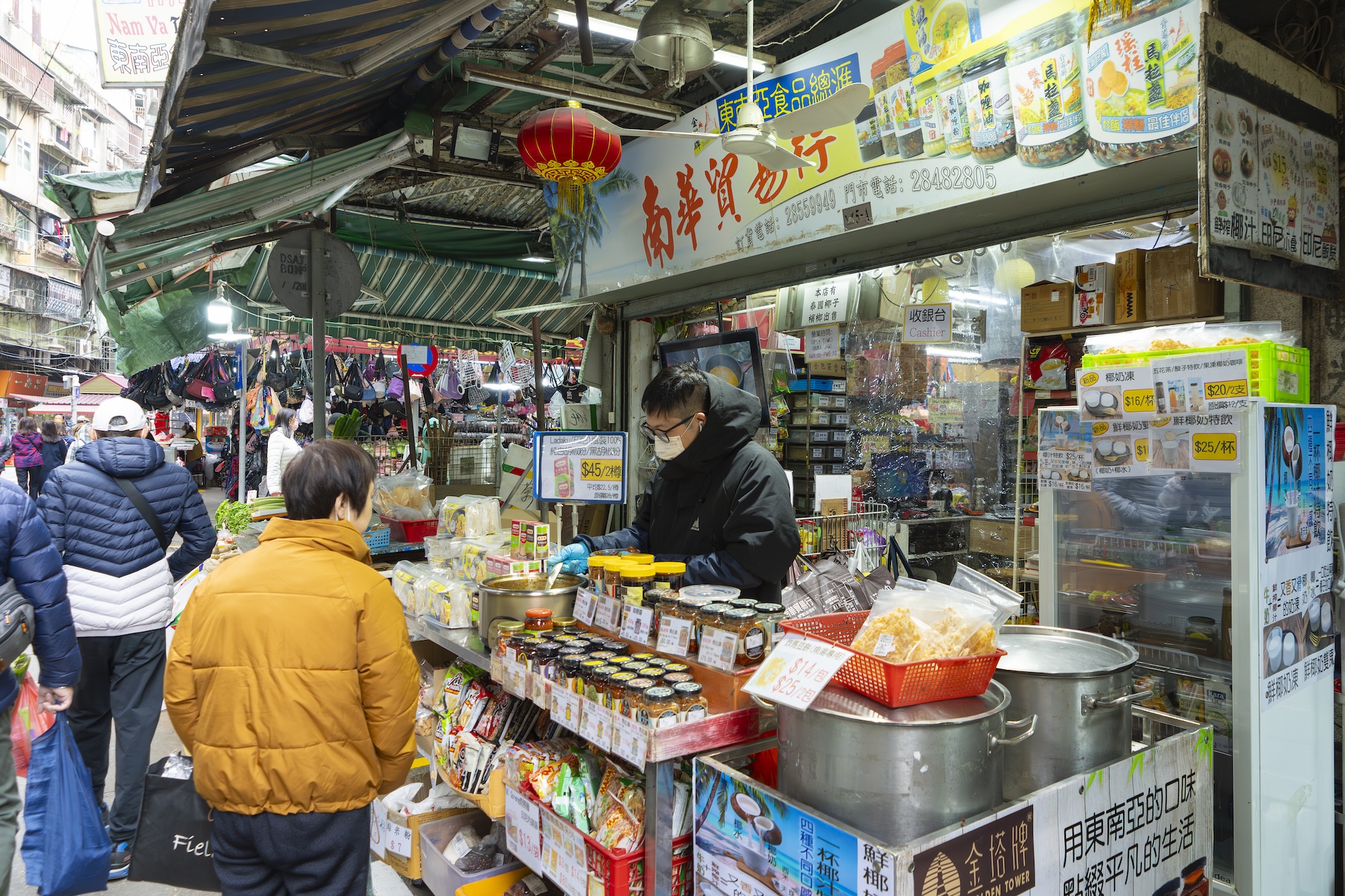
Golden Tower is another local condiment brand being run by someone who hadn’t ever planned to work in the sauce sector. Patrick Ho is an IT professional who took over from his father, Golden Tower’s Myanmar-born founder, Ho Veng Ian, 18 years ago.
The senior Ho was an entrepreneur who started the Nam Va Trading company in 1974, having relocated to Macao the decade prior. Like many of his compatriots, Ho resided in the Three Lamps District (Rotunda de Carlos da Maia) and struggled to find work due to language barriers. He wound up opening his own store, initially selling imported products from Myanmar and Malaysia.
In the 1990s, however, Ho developed his own take on Myanmese-inspired sauces – believing their special balance of salt with spice would better cater to Macao tastes than other Southeast Asian sauces available in the market. Patrick Ho explained how his father’s assiduous research took him back to Myanmar, where he spent months studying with Myanmese chefs. “He started learning how to produce belacan [a type of shrimp paste] and how to make mohinga [a type of fish soup],” the junior Ho notes.
Equipped with new-found knowledge, Ho Veng Ian returned to Macao and launched Golden Tower as part of Nam Va Trading. The brand’s signature condiment is called ‘Myanmar Scallop Belachan’ – a product locals tend to pair with Golden Tower’s handmade noodles, Patrick Ho says.
He didn’t start his career in IT expecting to someday be at the helm of his father’s rather traditionally run enterprise. But a chance meeting with Ho senior’s business partner inspired him to turn his hand to the brand. For almost two decades, Patrick Ho has been working to revitalise Golden Tower through a variety of measures. He revamped product packaging in a bid to appeal to younger customers, for instance, and has standardised the company’s manufacturing processes to ensure consistent quality is delivered in every jar.
Patrick Ho also actively participates in trade expos, like the Macao International Trade & Investment Fair and the Guangdong and Macao Branded Products Fair, aiming to boost brand recognition. His current ambition is to get his father’s carefully developed belacan into the mainland and beyond.
These four condiment companies offer unique tastes of Macao – and through their stories, precious insights into the city’s history. Each one embodies a story of survival through thick and thin. Most are multigenerational tributes to hardworking families who’ve made Macao their home. Their products add a little zing to the dinner tables near and far, but also a topic of conversation.
